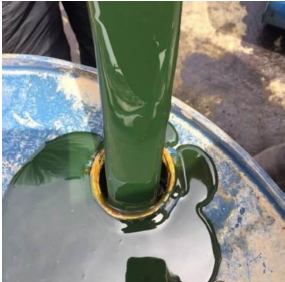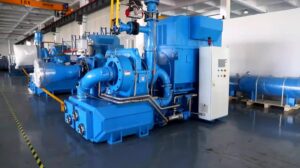Innovations in Rubber Process Oil: Trends and Future Directions
Introduction to Rubber Process Oil
Rubber Process Oil is a vital ingredient in the production of various rubber products, including tires, footwear, automotive components, and industrial goods. It is used to enhance the processability of rubber, improve the flexibility of the finished products, and reduce the cost of manufacturing. The type and quality of RPO used can significantly affect the properties of rubber, such as elasticity, tensile strength, and resistance to aging.
Types of Rubber Process Oil
There are several types of Rubber Process Oils, each with its own characteristics and applications:
- Aromatic Rubber Process Oil: Known for its excellent solvency, this type is commonly used in the production of tires and industrial rubber products.
- Naphthenic Rubber Process Oil: This oil is valued for its low-temperature performance and stability, making it ideal for rubber products used in colder climates.
- Paraffinic Rubber Process Oil: With its high flash point and low volatility, paraffinic oil is used in applications where heat resistance is essential.
Recent Innovations in Rubber Process Oil
1. Development of Bio-based Rubber Process Oils
Benefits of Bio-based Rubber Process Oils:
- Sustainability: Derived from renewable resources, reducing the carbon footprint of rubber production.
- Improved Performance: Enhanced aging resistance and compatibility with a wide range of rubber compounds.
- Regulatory Compliance: Meets the growing demand for environmentally friendly products, particularly in regions with strict environmental regulations.
2. Advanced Additives for Enhanced Performance
Key Additives in Modern Rubber Process Oils:
- Antioxidants: Protect rubber products from oxidative degradation, extending their lifespan.
- Plasticizers: Improve the flexibility and processability of rubber, reducing energy consumption during manufacturing.
- Processing Aids: Enhance the flow properties of rubber compounds, leading to smoother production processes and higher quality finished products.
3. Tailored Formulations for Specific Applications
Examples of Tailored Formulations:
- High-Temperature Resistant RPOs: Designed for applications where rubber products are exposed to extreme heat, such as in automotive engines.
- Low-Temperature Resistant RPOs: Ideal for rubber products used in cold climates, ensuring flexibility and durability even at low temperatures.
- Eco-friendly RPOs: Formulated to minimize environmental impact, with reduced levels of harmful substances and improved biodegradability.
Trends Shaping the Future of Rubber Process Oil

The future of Rubber Process Oil is being shaped by several key trends that reflect the evolving needs of the rubber industry and the broader environmental landscape.
1. Sustainability and Eco-friendly Innovations
The Role of Regulatory Bodies:
- Stricter Regulations: Governments and regulatory bodies worldwide are imposing stricter limits on the use of hazardous substances in rubber products, pushing manufacturers to adopt safer and more sustainable RPOs.
- Green Certifications: The demand for rubber products with green certifications, such as those that meet the requirements of the EU REACH regulation, is on the rise.
2. Technological Advancements in RPO Production
Key Technological Innovations:
- Hydrotreating Technology: A refining process that removes impurities from RPO, resulting in oils with lower sulfur content and better oxidative stability.
- Catalytic Dewaxing: A process that improves the low-temperature properties of RPO, making it suitable for use in colder climates.
- Nano-additives: The incorporation of nano-sized additives in RPOs to enhance their performance, particularly in terms of wear resistance and thermal stability.
3. Demand for High-performance Rubber Products
High-performance Applications:
- Automotive Industry: The development of RPOs for high-performance tires, engine components, and seals that can withstand extreme conditions.
- Aerospace Industry: The need for RPOs that offer exceptional resistance to harsh environments, including high-altitude and high-speed conditions.
- Industrial Applications: The use of RPOs in industrial rubber products that require long-lasting performance and reliability.
Future Directions in Rubber Process Oil
1. Development of Next-generation Bio-based Oils
Potential Advantages:
- Higher Yield: Next-generation bio-based oils may offer higher yield and better performance than current bio-based options.
- Compatibility with Advanced Rubber Compounds: These oils are expected to be more compatible with advanced rubber compounds, enabling the production of high-performance, eco-friendly rubber products.
2. Integration of Smart Technologies
Smart Technologies in RPO:
- AI-driven Formulation: Using AI to predict the optimal combination of additives and base oils for specific applications, leading to more efficient and effective RPO formulations.
- Real-time Monitoring: The use of sensors to monitor the performance of RPO in real-time, allowing for adjustments during the production process to ensure consistent quality.
- Predictive Maintenance: Leveraging data analytics to predict when rubber products may fail due to RPO degradation, enabling timely maintenance and replacement.
3. Collaboration and Innovation in the Rubber Industry
Key Collaborative Efforts:
- Joint Research Initiatives: Collaborative research projects aimed at developing new RPO formulations and technologies.
- Industry Standards: The development of industry standards for RPO that promote sustainability and innovation.
- Knowledge Sharing: The exchange of knowledge and best practices between industry players to accelerate the adoption of new technologies and processes.
Final Thoughts
The Rubber Process Oil industry is undergoing a significant transformation, driven by the need for more sustainable, high-performance, and technologically advanced products. As the industry continues to evolve, innovations in RPO will play a critical role in shaping the future of rubber manufacturing. From bio-based oils to smart technologies and collaborative efforts, the future of Rubber Process Oil is set to be dynamic and exciting. These advancements not only promise to enhance the performance and sustainability of rubber products but also align with the broader global push towards environmental responsibility.
FAQs
Rubber Process Oil is made through the refining and processing of crude oil. The process involves several steps:
- Crude Oil Distillation: The crude oil is heated and separated into various fractions, with the heavier fractions being used to produce Rubber Process Oil.
- Hydrotreating: The heavy fractions undergo hydrotreating to remove impurities such as sulfur and nitrogen, which enhances the stability and performance of the oil.
- Blending: The treated oil is then blended with additives to achieve the desired properties, such as viscosity, solvency, and compatibility with rubber compounds.
Rubber Process Oils can be classified into three main types based on their chemical composition and properties:
- Aromatic Rubber Process Oil: Contains a high percentage of aromatic hydrocarbons, making it suitable for products like tires and industrial rubber goods.
- Naphthenic Rubber Process Oil: Known for its low-temperature performance and stability, often used in rubber products for colder climates.
- Paraffinic Rubber Process Oil: Characterized by a high flash point and low volatility, making it ideal for heat-resistant rubber products.
The viscosity of Rubber Process Oil varies depending on the type of oil and its specific formulation. Generally, RPOs have a viscosity range of 100 to 500 centistokes (cSt) at 40°C. The viscosity is crucial as it affects the processability of the rubber compound and the performance of the final product.
Rubber Process Oils are oils used as processing aids in the rubber industry. They are added to rubber compounds to improve the processability, enhance the flexibility and durability of the finished products, and reduce manufacturing costs. RPOs are essential in the production of tires, automotive components, footwear, and various industrial rubber goods.

What is Rubber Process Oil? | Guide to Applications, Benefits, and Selection
What is Rubber Process Oil? | Guide to Applications, Benefits, and Selection Discover More In the sophisticated ecosystem of rubber manufacturing, raw polymers are the canvas, but rubber process oil is the essential medium that brings the masterpiece to life. It is the critical component that transforms rigid, unworkable raw materials into the versatile, durable, and high-performance rubber products that define modern industry and daily convenience. For specialists dedicated to chemical innovation and precision, such as the team at Rumanza Lubricants, the science

Which UAE Lubricants manufacturers is Best for High-Mileage Engines?
Which UAE Lubricants manufacturers is Best for High-Mileage Engines? Discover More The sprawling deserts and bustling metropolises of the United Arab Emirates present a uniquely demanding environment for vehicles, pushing engine lubrication technology to its absolute limits. From the scorching summer heat that can cause conventional oils to thin out and lose protective properties, to the endless stop-start traffic of cities like Dubai and Abu Dhabi that promotes sludge and acidic buildup, our cars endure a severe service regimen unlike

What Vehicles Use Kerasene? A Comprehensive Guide
What Vehicles Use Kerasene? A Comprehensive Guide to Fueling Beyond Gasoline Discover More When we think of vehicle fuel, gasoline and diesel immediately come to mind. They are the lifeblood of our daily commutes, the power behind the trucks that deliver our goods, and the standard by which we measure automotive progress. But venture beyond the everyday, into the realms of high-altitude aviation, rugged agricultural machinery, and groundbreaking space exploration, and you’ll discover a different, equally vital fuel that operates

How To Chose Antioxidant Additives in UAE | Industrial Grade Chemicals?
How To Chose Antioxidant Additives in UAE | Industrial Grade Chemicals? Discover More In the heart of a rapidly industrializing region, the United Arab Emirates stands as a beacon of manufacturing, logistics, and heavy industry. From the sprawling automotive workshops of Dubai to the massive petrochemical complexes in Ruwais, the performance and longevity of machinery are paramount. At the core of this operational excellence lies a critical, yet often overlooked, component: industrial lubricants and fluids. These lifeblood substances are constantly

Viscosity Index Improvers UAE – Improve Lubricant Performance
Viscosity Index Improvers UAE – Improve Lubricant Performance Discover More In the heart of the United Arab Emirates, where ambition is matched only by the scale of its infrastructure, the machinery that builds and powers the nation faces a relentless adversary: the climate. The combination of extreme heat, temperature volatility, abrasive dust, and intense UV radiation creates a perfect storm of conditions that relentlessly attack the lifeblood of all mechanical systems—the lubricant. For maintenance managers, plant operators, and fleet owners,

Compressor Oils UAE | Lubricants for Air Compressors
Compressor Oils UAE | Lubricants for Air Compressors Discover More In the relentless engine of the UAE’s economy, where ambition is matched only by the scale of its construction and industry, air compressors are the indispensable workhorses. They are the silent force driving the pneumatic tools that build our skylines, the automated machinery in our factories, the climate control systems in our buildings, and even the processes in oil and gas refineries. Yet, within these critical machines, a component often

How to Chose Best Diesel Engine Oil in UAE for Your Vehicle | Get Quote
Guide to Choosing the Best Diesel Engine Oil in UAE For Your Vehicle Discover More In the United Arab Emirates, the relationship between a driver and their vehicle is forged in fire. The unrelenting sun, the searing asphalt, and the ever-present fine sand create an operating environment that is among the most punishing on Earth. For the diesel engines that power the UAE’s growth—from the rugged Land Cruisers conquering dunes to the Ford F-150s on city streets and the fleets